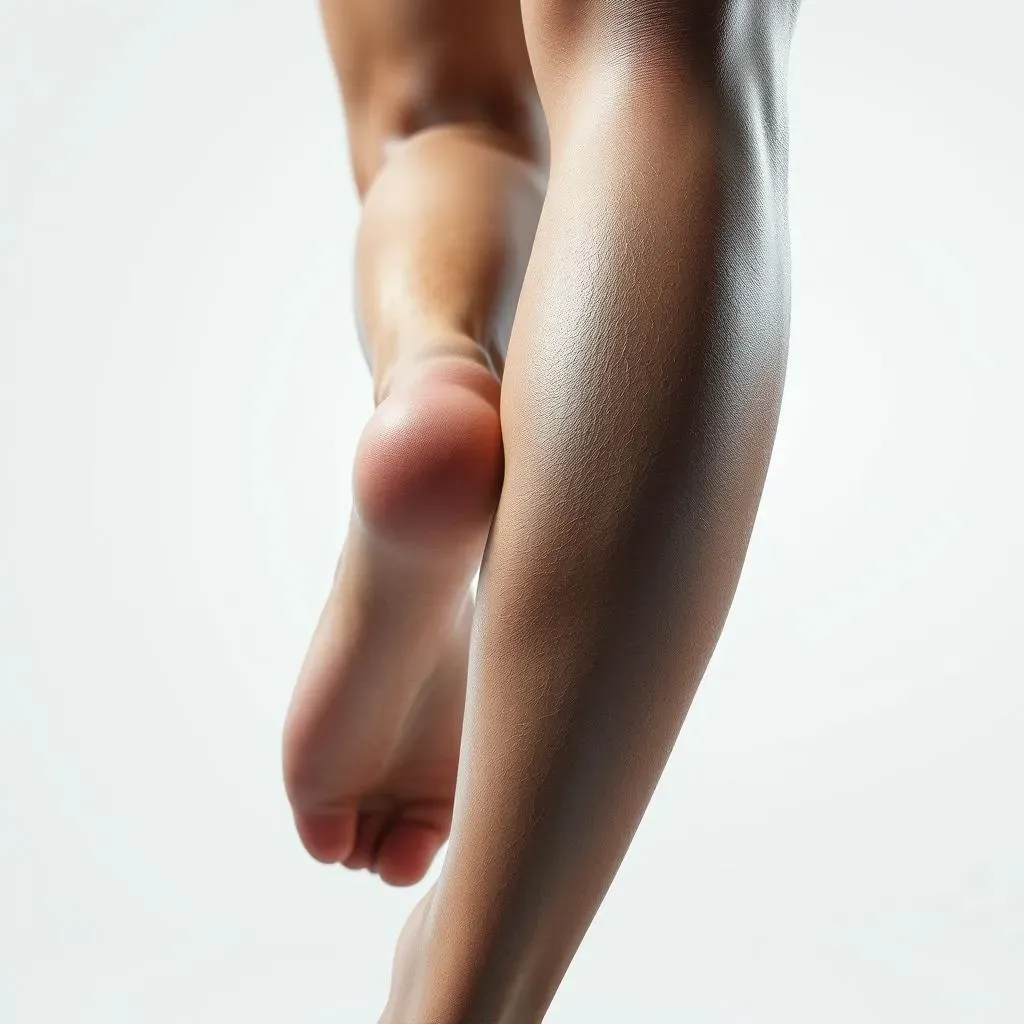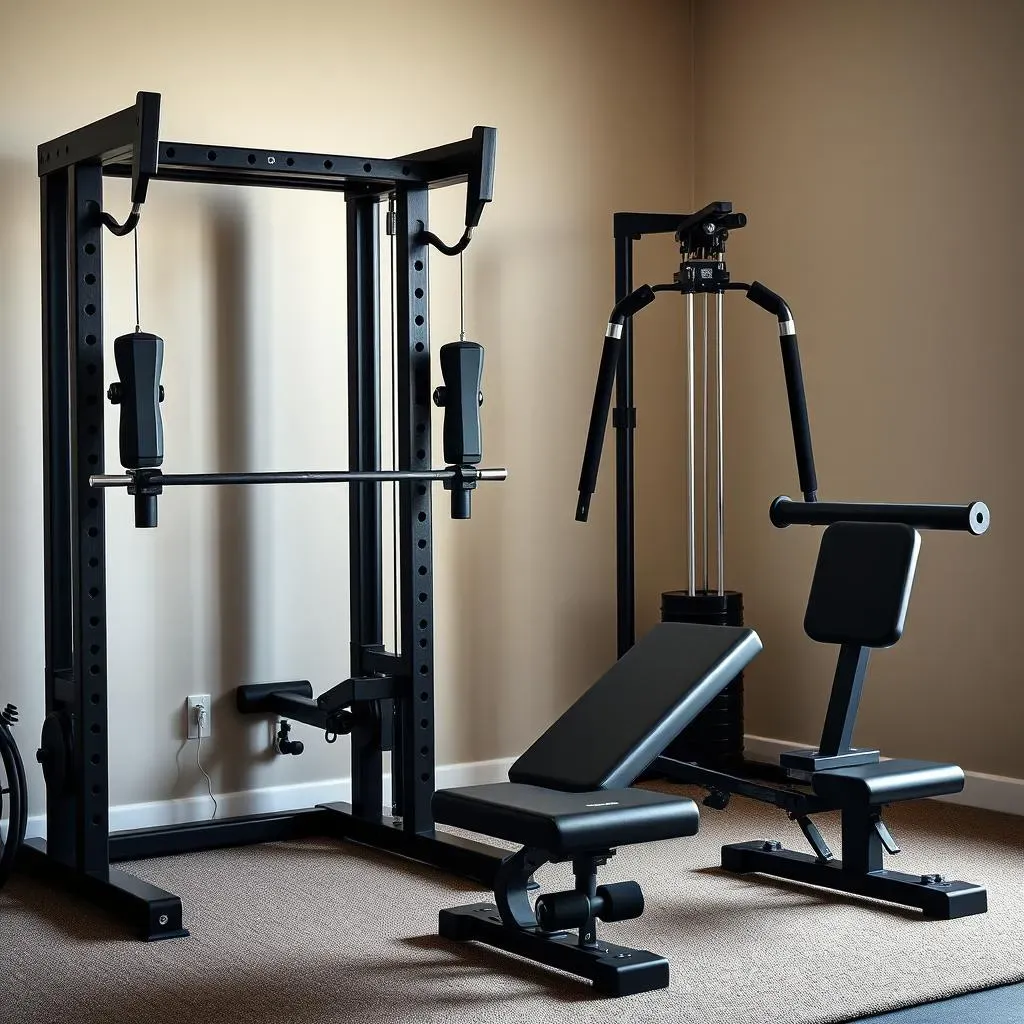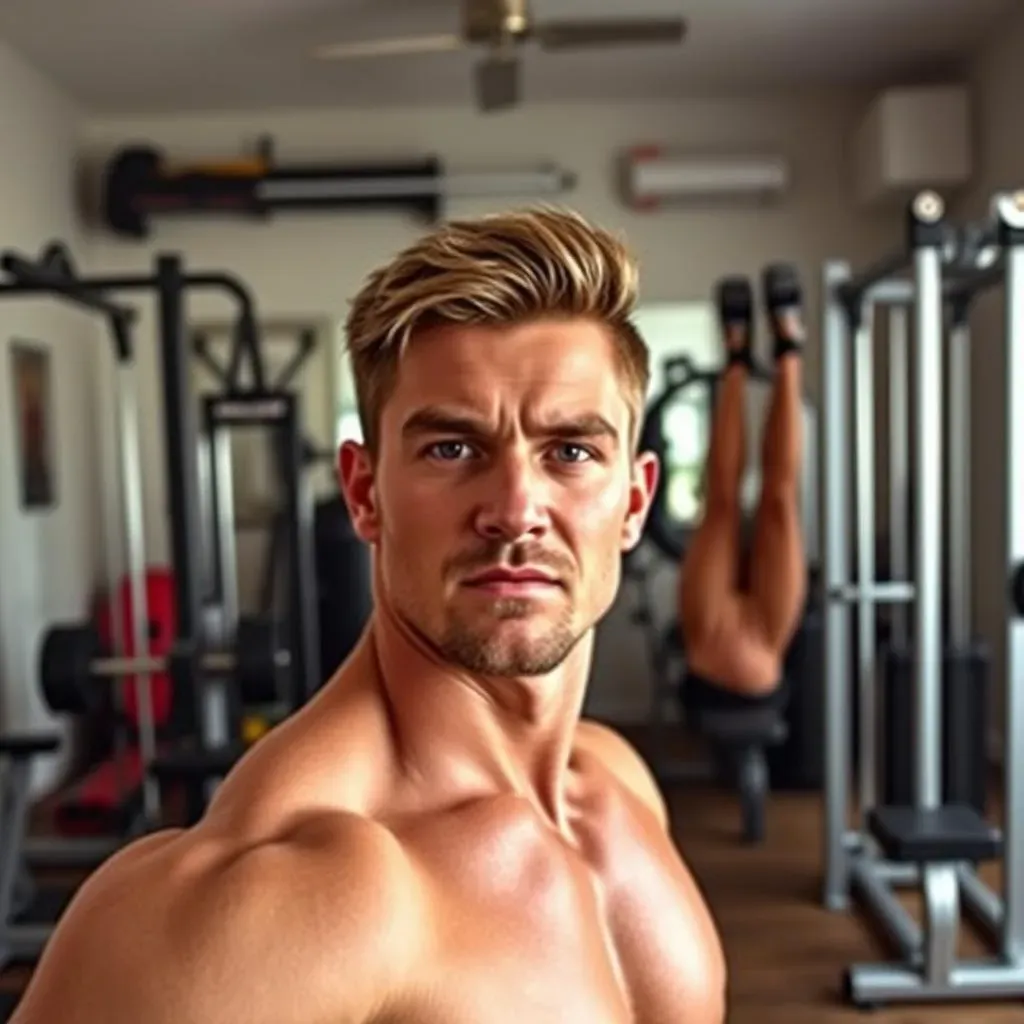Table of Contents
Ready to transform your lower body without leaving the house? As an Olympic weightlifter, I've spent years testing and training with all kinds of leg equipment, and I know what works. Forget those crowded gyms and say hello to effective workouts at home. This article is your guide to selecting the best home gym equipment for legs. We'll explore the must-have machines, from versatile squat racks to targeted leg presses, and even some often-overlooked gems. I'll share my personal experiences, highlighting what makes each machine effective and how to use them safely. We'll discuss the benefits of various machines, focusing on how they target specific muscles, and I will guide you through the best picks for your home setup. Whether you're a beginner or a seasoned lifter, get ready to discover the tools you need to build serious leg strength and power right in your living room. Let's get started!
Why Leg Machines are Essential for Your Home Gym
Why Leg Machines are Essential for Your Home Gym
Beyond the Basics
so you’re thinking about building up your legs, right? You might be picturing endless squats and lunges in your living room. That's great, but let’s be real, sometimes you need a bit of help. Leg machines aren't just for show; they're game-changers, especially when you're working out at home. They provide support and stability, making it easier to focus on the right muscles, and they allow you to push yourself safely, even when you're flying solo.
I remember when I first started, I had a hard time with proper squat form. It wasn't just about strength; it was about control. Machines helped me isolate the correct muscles and get a feel for the movement without the added worry of losing my balance. This is important not only for beginners, but also for lifters who are coming back from an injury, or just looking for a way to isolate different parts of their legs. They're like your reliable training partners that never get tired of spotting you.
Targeted Training
The beauty of leg machines is their ability to target specific muscle groups. Free weights are fantastic for overall strength, but machines let you zero in on those stubborn areas. Want to build up your quads? The leg extension machine is your friend. Hamstrings feeling neglected? The leg curl machine has got you covered. And let’s not forget the glutes; a good leg press or hip abduction machine will have them screaming. This targeted approach is great for addressing imbalances and making sure you’re not just building bulk but also creating well-rounded, functional strength.
Muscle Group | Machine Example | Benefit |
|---|---|---|
Quads | Leg Extension | Isolates and strengthens the front of the thigh. |
Hamstrings | Leg Curl | Targets the back of the thigh for balanced strength. |
Glutes | Leg Press | Builds power in the glutes and entire lower body. |
Safety and Support
Let’s talk safety. Working out at home can be awesome, but it also means you might not have a spotter. Machines offer a controlled environment, reducing the risk of injury. They guide your movements, helping you maintain proper form, which is essential for preventing strains and sprains. Plus, if you have any back issues, machines can be a lifesaver. They support your spine while still allowing you to work your legs effectively. And when I'm pushing the limits with heavy weights, I can focus on the lift without the added worry of losing control. It's about being smart and training hard, not just hard.
Top Leg Machines for Your Home Gym: My Expert Picks
Top Leg Machines for Your Home Gym: My Expert Picks
The All-Stars of Home Leg Training
Alright, let's get to the good stuff – the machines that actually deserve a spot in your home gym. I’m not talking about those gimmicky contraptions you see on late-night TV. I’m talking about the solid, reliable pieces of equipment that will help you build real strength. First up, we have the squat rack. Yes, it's not a machine in the traditional sense, but it’s the king of leg exercises, and you can do way more than just squats on it. Think deadlifts, lunges, even rows. It's like the Swiss Army knife of leg training. Then we have leg press machines, which are amazing for isolating your legs and glutes. They come in different angles, but for a home gym, a vertical leg press is your best bet because it takes up less space. Don’t worry, it will get the job done.
Next, let's talk about the Smith machine. I know, some people have mixed feelings about it, but hear me out. For home use, it's a great way to add stability and safety to your workouts, especially if you're working out solo. It's perfect for unilateral exercises, where you’re working one leg at a time, like single-leg squats or lunges. And finally, for those of you who want to target those specific leg muscles, we can’t forget the leg extension, leg curl, and calf raise machines. Each one isolates a different part of your legs, ensuring balanced development. These machines might not be as versatile as the squat rack, but they are incredibly effective for targeted training. Think of them as your specialized tools for fine-tuning your physique.
My Top Picks and Why They Work
so you’ve got the basics, but let’s dig a little deeper into my personal favorites. If I had to pick just a few machines for a home gym, I'd go with a good quality squat rack, a vertical leg press, and a Nordic curl bench. The squat rack is non-negotiable; it’s the most versatile piece of equipment for leg training. It lets you do compound movements that work multiple muscle groups at once, making it a super efficient choice. The vertical leg press is great for those days when you want to push your legs to their absolute limit without worrying about your back. It isolates the legs and glutes like no other machine. And the Nordic curl bench? This might be a surprise, but it’s fantastic for hamstring strength. Strong hamstrings are essential for injury prevention, and this machine helps you build them in a way that few others can. It’s also great for building explosive power, which is important for any athlete.
When choosing your home gym equipment, think about your goals, your space, and your budget. You don’t need every machine under the sun to get a great workout. Start with the essentials and add more specialized equipment as you progress. Don’t be afraid to mix and match machines with free weight exercises, and remember, consistency is key. It’s about finding the right balance that works for you and your body. Trust me, with the right equipment and a solid plan, you can build a powerful and impressive lower body right at home.
Machine | Why I Love It | Best For |
|---|---|---|
Squat Rack | Versatile, works multiple muscle groups | Compound movements, overall leg strength |
Vertical Leg Press | Isolates legs and glutes, safe for heavy lifting | Heavy leg workouts, glute development |
Nordic Curl Bench | Builds hamstring strength, prevents injury | Targeted hamstring work, injury prevention |
Safety Tips for Using Leg Machines at Home
Safety Tips for Using Leg Machines at Home
Getting Started Safely
let’s talk safety, because nobody wants to end up with a tweaked knee or a pulled hamstring. Before you even think about loading up the weights, take some time to get familiar with your equipment. I mean, really familiar. Read the manuals, watch some videos, and make sure you understand how each machine works. It’s like learning to drive a new car; you wouldn't just jump in and start speeding around, would you? Same goes for your leg machines. Get a feel for the adjustments, the range of motion, and where the safety catches are. This will make a huge difference in how safe and effective your workouts are.
Now, let's talk about form. It’s more important than the amount of weight you're lifting. Seriously, I've seen people with bad form lifting ridiculously heavy weights, and they’re just asking for trouble. Focus on controlled movements, and make sure you're not using momentum to get the weight up. If you're not sure about your form, get some help. There are plenty of qualified personal trainers who can guide you, even if you're working out at home. It’s always better to start with lighter weights and perfect your form before you start adding plates. Think of it as building a strong foundation; if the foundation isn’t solid, everything else will crumble.
Smart Training Practices
Another key thing is to listen to your body. If something doesn’t feel right, stop. Don’t try to push through pain; it’s your body telling you something is wrong. I remember once, I ignored a twinge in my knee, and it put me out of training for weeks. It taught me a valuable lesson: it’s always better to be safe than sorry. Also, make sure you're warming up properly before you start your workout. A few minutes of light cardio and some dynamic stretches can make a huge difference in preventing injuries. And don’t forget to cool down after your workout; it helps your muscles recover. It’s like giving your body a little thank you after all the hard work you’ve put it through.
And finally, don't be afraid to ask for help. Even if you're working out at home, there are plenty of resources available. You can connect with online communities, watch tutorial videos, or even hire a virtual trainer. There’s no shame in asking for guidance, especially when it comes to your health and safety. Remember, consistency and smart training are the keys to building strong, healthy legs. It’s not about going all-out all the time; it’s about being smart, patient, and persistent.
Safety Tip | Why It Matters |
|---|---|
Familiarize yourself with equipment | Understanding the machine reduces the risk of misuse. |
Focus on proper form | Correct form prevents injuries and maximizes effectiveness. |
Listen to your body | Stopping at pain prevents serious injuries. |
Warm-up and cool-down | Prepares muscles for activity and aids in recovery. |
Home Gym Leg Equipment: Final Thoughts and FAQs
Home Gym Leg Equipment: Final Thoughts and FAQs
The Bottom Line
So, we've covered a lot about home gym leg equipment, and it's time to wrap things up. Building a strong lower body is not just about aesthetics; it’s about overall health, balance, and functional strength. Whether you're an athlete or just someone looking to stay active, having the right equipment at home can be a total game-changer. Remember, the key is to find a balance that works for you. Don’t feel like you need every single machine out there. Start with the essentials, like a good squat rack and maybe a leg press. Then, add on as you go. It’s about making smart choices that align with your goals and your space. And always, always prioritize safety and proper form.
I’ve seen so many people transform their bodies and their lives through consistent training. It's not just about the physical aspect; it’s about the mental toughness and the discipline you develop along the way. Having a home gym means you have no excuses; you can train whenever you want, in the comfort of your own space. It’s like having a personal training studio right in your house. And with the right equipment, you can achieve incredible results. So, take the time to invest in yourself, and watch your legs and your confidence grow.
Addressing Your Burning Questions
Now, let’s tackle some common questions I get asked about home gym leg equipment. First up, "Do I really need machines, or can I just stick to bodyweight exercises?" Bodyweight exercises are fantastic, but machines offer a different kind of challenge. They allow you to isolate specific muscles and push yourself safely with added resistance. It’s not an either/or situation; it’s about finding a balance that works for you. Another question I often hear is, "What’s the best machine for beginners?" I always recommend starting with a squat rack because it's versatile and can be used for various exercises. It also teaches you proper form and builds overall leg strength.
And lastly, "How much space do I need for a home gym?" This one depends on your budget and the space you have available. You don’t need a huge room to get a good workout. A small corner with a squat rack and a few other pieces can be enough. The key is to make the most of the space you have. So don't let space limitations hold you back from reaching your goals. With a little planning and the right equipment, you can create a fantastic home gym that will serve you well for years to come.
Question | My Answer |
|---|---|
Do I need machines or bodyweight? | Both have benefits; balance is key. |
Best machine for beginners? | A squat rack is versatile and effective. |
How much space is needed? | You can make the most of a small space. |
Final Words of Encouragement
Building a home gym is an investment in your health and well-being, and it’s an exciting journey. Don’t be afraid to experiment, try different machines, and see what works best for you. Remember that progress takes time, so don’t get discouraged if you don’t see results right away. Stay consistent, stay focused, and enjoy the process. I am confident that with the right equipment and a solid plan, you can build incredible leg strength right in the comfort of your own home. So go ahead, take that step, and start your journey toward a stronger, healthier you.
And if you have any questions or want to share your progress, feel free to reach out. I'm always excited to hear about people’s fitness journeys. Remember, it's not just about lifting weights; it's about building a stronger, healthier, and more confident version of yourself. So go out there and make it happen!
Home Gym Leg Equipment: Final Thoughts
Building strong legs at home is totally achievable with the right equipment and knowledge. Remember, it’s not just about having the fanciest machines; it's about understanding how to use them effectively and safely. Whether you opt for a space-saving vertical leg press or a versatile hack squat machine, consistency and proper form are key. Don't be afraid to mix things up with free weights and bodyweight exercises to create a well-rounded routine. And always, if you’re unsure, working with a qualified trainer can make a huge difference. Now go ahead, transform your living room into a leg-building powerhouse, and get those gains!